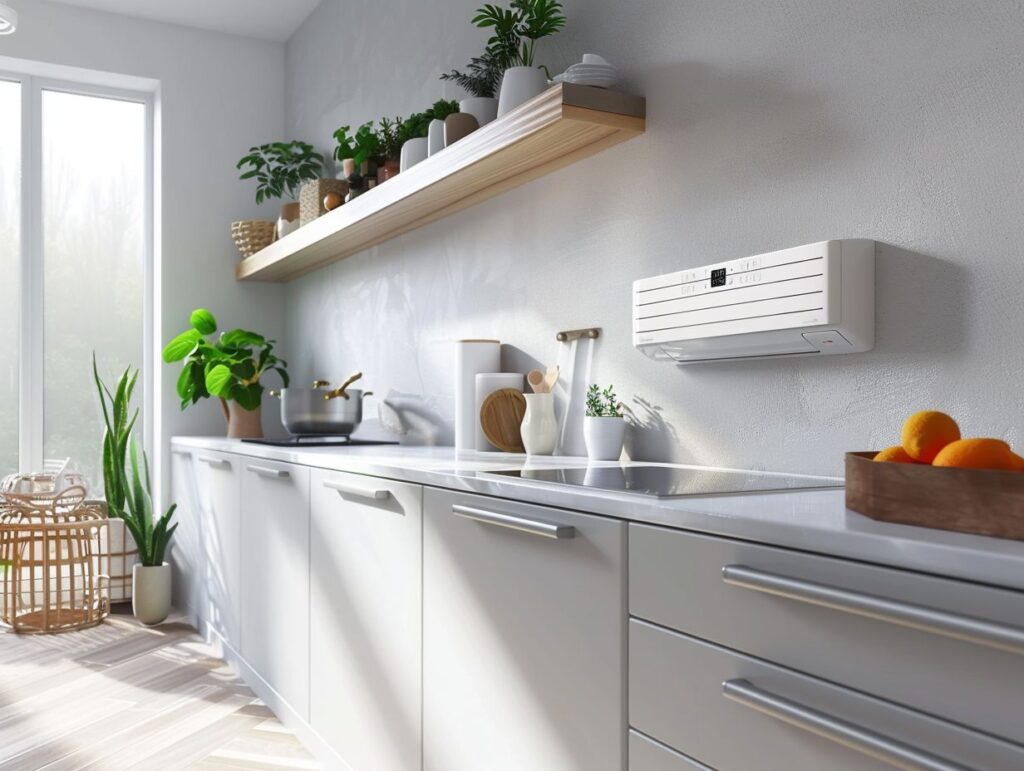Selecting the appropriate wattage for your kitchen radiator is essential to maximise heating efficiency. Various factors, including the dimensions and configuration of your kitchen, insulation quality, and local climate, are all key considerations in determining the necessary wattage.
This guide will explore the concept of wattage, its significance in heating systems, and methods for determining the optimal wattage for your kitchen. Additionally, practical recommendations will be offered for selecting the correct kitchen radiator wattage, along with guidance on installation and maintenance procedures to ensure a cosy and comfortable kitchen environment.
Key Takeaways:
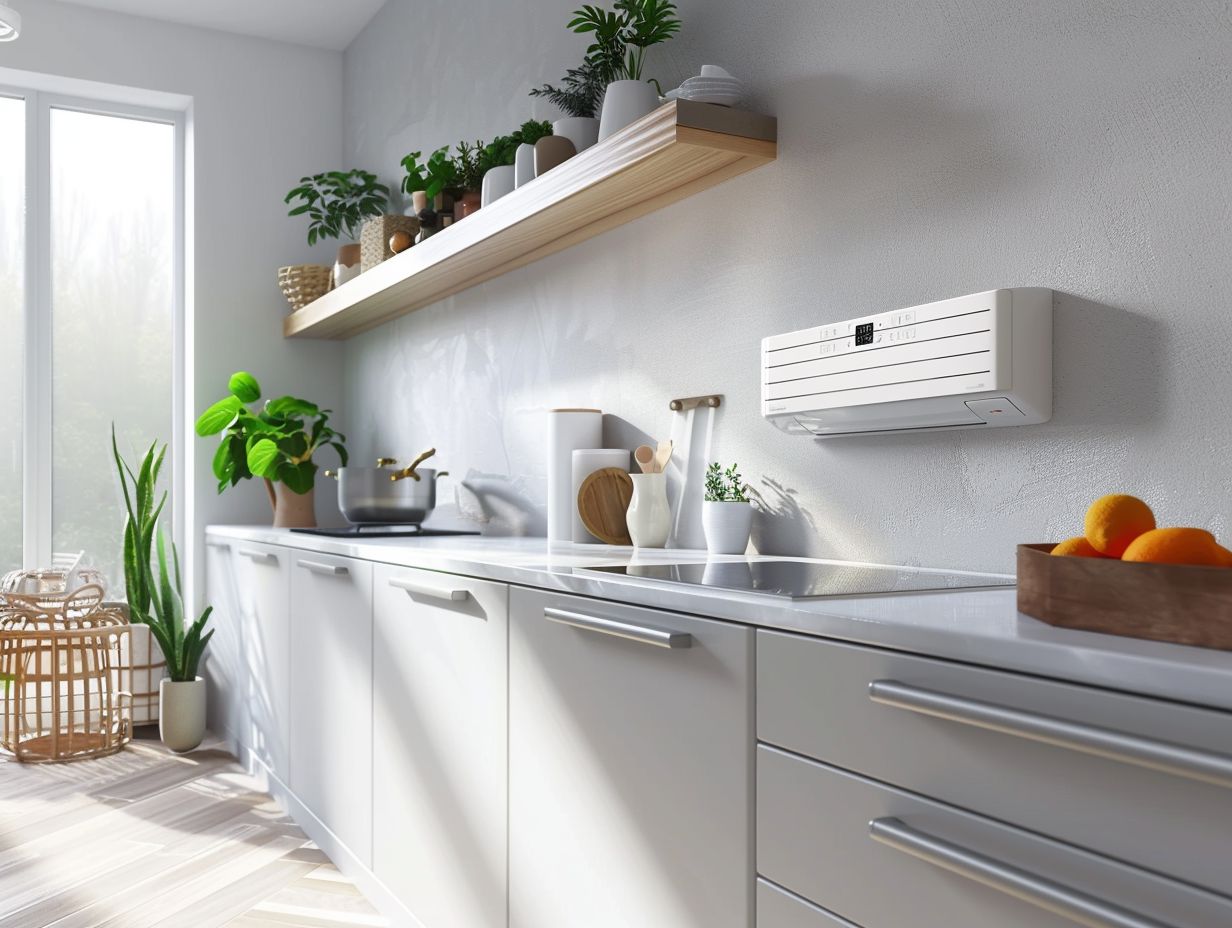
- Choose the right wattage for your kitchen radiator by considering the size and layout of your kitchen, insulation, climate, and desired heat output.
- Calculate the appropriate wattage using a simple method to ensure efficient heating.
- Proper installation and maintenance can help maximise the performance and lifespan of your kitchen radiator.
Understanding Kitchen Radiator Wattage
Understanding Kitchen Radiator Wattage is crucial for achieving efficient heating solutions in your home. Properly sizing your radiator’s wattage ensures optimal heat distribution throughout the room, leading to energy savings and effective heating.
By selecting the correct wattage for your kitchen radiator, you can avoid the common issue of underheating or overheating a room. Having the right wattage means that the radiator can effectively heat the space without consuming unnecessary energy.
A properly sized radiator ensures that the room maintains a comfortable temperature consistently, creating a cosy environment for cooking and relaxing.
When choosing the wattage, factors like room size, insulation, and desired temperature play a vital role in determining the most suitable option for efficient and cost-effective heating.
What is Wattage and Why is it Important?
Wattage is a crucial factor when it comes to determining the heating capacity of an electric heater. It refers to the amount of power consumed to produce heat. Understanding wattage is essential for selecting an energy-efficient heating solution that meets the heating requirements of your kitchen.
The wattage of an electric heater or radiator directly influences its heat output and energy consumption. Higher wattage usually means more heat production but also results in increased energy usage.
When choosing the appropriate wattage for your kitchen, factors such as room size, insulation quality, and local climate conditions should be taken into account to ensure optimal heating efficiency. Matching the heater’s wattage to the specific needs of your space can help avoid energy wastage and unnecessary expenses while keeping a comfortable indoor temperature.
Factors to Consider When Choosing Wattage
When selecting the wattage for your kitchen radiator, several important factors must be considered.
These factors include the size and layout of your kitchen, the level of insulation in your home, the prevailing climate conditions, and the desired heat output. Taking these factors into account is essential for ensuring an effective and efficient heating solution.
The size of your kitchen directly influences the amount of heat needed to maintain a comfortable temperature. Typically, larger rooms require higher wattage radiators. The quality of insulation in your home is vital for heat retention, as well-insulated properties will need less wattage to achieve optimal warmth.
Climate is also a significant factor, with colder regions often requiring higher wattage radiators to effectively combat freezing temperatures. By choosing the appropriate wattage based on these factors, you can improve heating efficiency and reduce energy consumption and costs in the long term.
Size and Layout of Kitchen
The size and layout of your kitchen play a crucial role in determining the appropriate wattage for your radiator. A larger kitchen with an open layout may require a higher wattage to ensure uniform heating across the space.
Conversely, a smaller kitchen with more enclosed walls may necessitate a lower wattage to avoid overheating.
It is important to strike a balance between too much and too little heat output to achieve optimal comfort and efficiency. When selecting radiator wattage, consider factors like insulation quality, window size, and ceiling height in addition to room size.
This holistic approach ensures that the chosen radiator can effectively heat the kitchen without wasted energy. Remember, an accurately matched radiator wattage promotes energy savings and a comfortable living environment.
Insulation and Climate
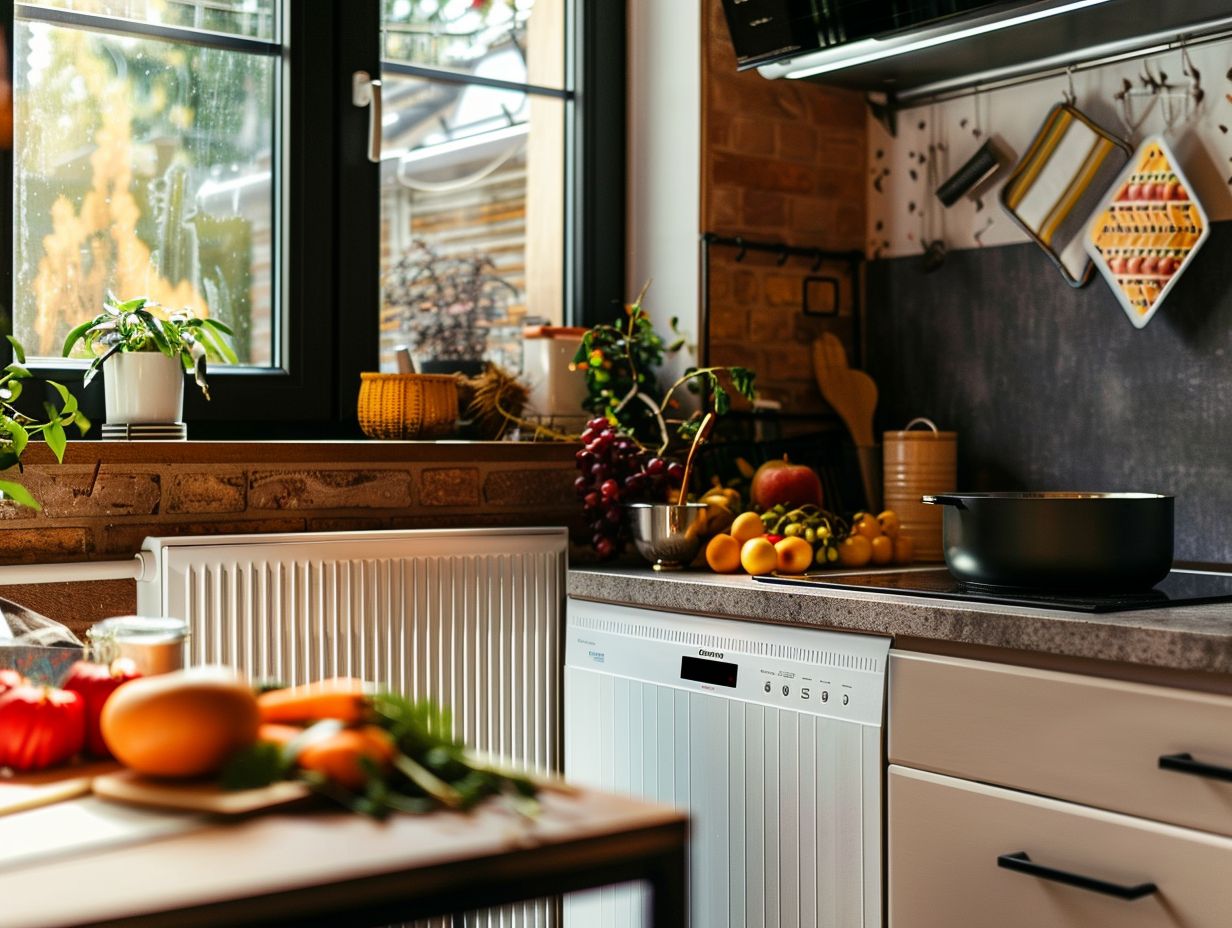
The insulation quality of your kitchen and the prevailing climate in your country greatly influence the wattage requirements for your radiator. Well-insulated kitchens in colder climates may need lower wattage for efficient heating.
On the other hand, kitchens with poor insulation or located in extremely cold regions might require higher wattage to maintain comfortable temperatures.
It’s essential to consider the insulation material, thickness, and overall condition of your kitchen walls and windows when determining the appropriate radiator wattage.
Variations in climate conditions such as extreme cold or humidity levels can impact the effectiveness of your heating system. By adjusting the radiator wattage based on insulation levels and climate variations, you can ensure optimal heating performance while maximising energy efficiency.
Heat Output and Energy Efficiency
When choosing the right wattage for your kitchen radiator, it is essential to balance heat output with energy efficiency. Optimal heat distribution and energy-efficient operation are key factors that ensure effective heating while also minimising energy bills.
Selecting the appropriate wattage for your radiator can result in significant cost savings in the long run. By aligning the radiator wattage with the size and insulation of the room, you can achieve maximum heating performance without unnecessary energy consumption.
Factors such as room dimensions, ceiling height, and insulation levels should be taken into account to determine the ideal wattage for your radiator. Additionally, incorporating smart heating controls and thermostatic valves can further improve energy efficiency by adjusting the heat output according to specific temperature requirements.
Calculating the Right Wattage for Your Kitchen
Calculating the right wattage for your kitchen radiator involves assessing your heating requirements based on the room size, insulation quality, and desired level of warmth. Utilise a wattage calculator to determine the appropriate wattage required for effective heating.
After you have evaluated the factors mentioned above, the subsequent step is to utilise the wattage calculator. Enter the room dimensions, type of insulation, and your comfort preferences into the calculator. The tool will then compute the necessary wattage based on these inputs, considering factors such as the room’s exposure to sunlight and external temperatures.
Upon obtaining the calculated wattage, it is advisable to round up to the nearest available higher wattage option for optimal heating performance. Keep in mind that selecting a radiator that meets or slightly exceeds the calculated wattage is crucial to ensure adequate warmth in your kitchen.
Method for Determining Wattage Needs
Determining the wattage needs for your kitchen radiator involves a simple yet essential calculation based on factors such as room size, insulation quality, and desired heating levels. Using a reliable wattage calculator is a crucial step in achieving optimal heating efficiency.
To start the calculation process, you should measure the length, width, and height of your kitchen to calculate the cubic footage accurately. It is important to take into account the type of insulation present in your walls and windows, as this directly impacts heat retention.
Next, you should consider the preferred temperature range for your kitchen, taking into account any specific comfort preferences you may have. By combining these factors, you can determine the appropriate wattage required to maintain a warm and efficiently heated kitchen during colder periods.
Following these steps will result in the implementation of a cost-effective and comfortable heating solution tailored to meet your specific requirements.
Choosing the Right Kitchen Radiator Wattage
When selecting the appropriate wattage for your kitchen radiator, it is vital to consider both the calculated wattage requirements and your personal heating preferences. To determine the suitable wattage for your kitchen radiator, you should first assess the size of the room and the level of insulation.
Larger kitchens with inadequate insulation may require a higher wattage to ensure effective heating. Conversely, smaller kitchens with good insulation can operate efficiently with a lower wattage radiator.
Additionally, it is important to take into account the climate of your region. Colder climates may demand higher wattage radiators to effectively combat extreme temperatures.
By carefully assessing these factors and striving for a harmonious balance between warmth and energy efficiency, you can optimise the heating system in your kitchen to achieve maximum comfort and sustainability.
Options and Recommendations
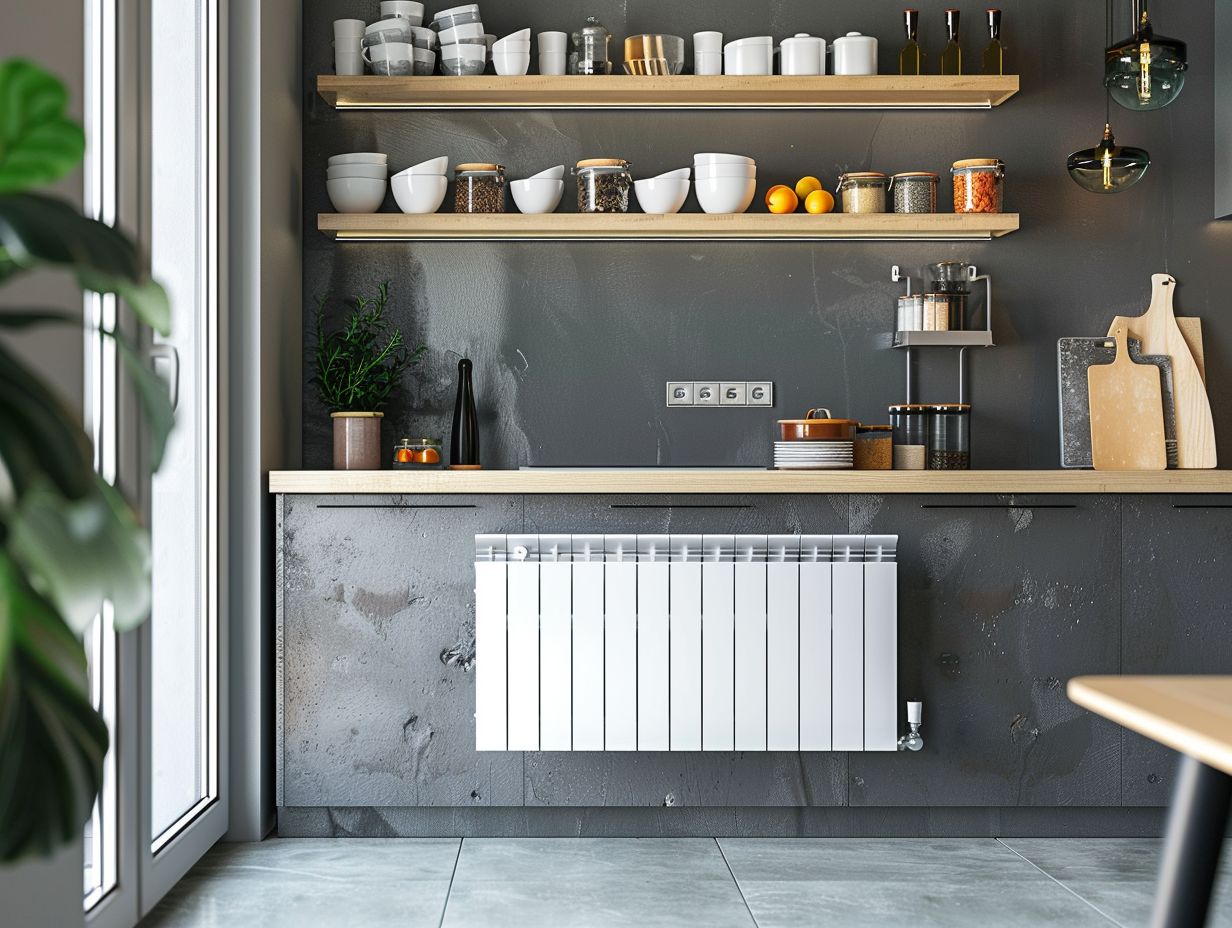
In terms of selecting the right wattage for your kitchen radiator, seeking expert advice can provide valuable insights into efficient heating solutions tailored to your specific requirements.
Consider consulting with heating professionals for personalised recommendations. These experts can assess the size of your kitchen, the insulation levels, and your heating preferences to determine the ideal wattage for optimal comfort and energy efficiency.
By utilising their knowledge and experience, you can avoid the common pitfalls of either overloading the radiator with excessive wattage or having insufficient heating power for your space.
Experts can guide you on the latest energy-efficient models available in the market that align with your heating goals. Choosing the correct wattage not only ensures a cosy kitchen environment but also helps in cost savings in the long run.
Installation and Maintenance Tips
Proper installation and maintenance of your kitchen radiator is crucial for achieving optimal heating performance and maximising its lifespan. By adhering to correct installation procedures and regular maintenance routines, you can mitigate potential issues and enhance the efficiency of your radiator.
During the installation process, it is imperative to ensure that the radiator is positioned correctly to facilitate effective heat distribution throughout the space. Regularly bleeding the radiator is essential to release any trapped air that could impede its performance.
Additionally, it is important to inspect the system for any signs of leaks or corrosion, as these can negatively impact the radiator’s heating capabilities.
When conducting maintenance on the radiator, use a soft cloth and mild detergent to clean it and prevent the accumulation of dust. Maintaining clear surroundings around the radiator is also crucial for promoting proper airflow.
Establishing a schedule for regular inspections and maintenance tasks is recommended to promptly address any potential issues that may arise.
Proper Installation Techniques
To ensure the effective operation of your kitchen radiator, it is crucial to implement proper installation techniques. Key aspects of installing a radiator for efficient heating include ensuring correct placement, secure fittings, and adequate ventilation.
When determining the placement of your kitchen radiator, you must consider factors such as proximity to windows for optimal heat distribution and efficient circulation. Securely connecting the radiator to the pipes with quality fittings is essential to prevent potential water damage and ensure leak-free operation.
Additionally, providing adequate ventilation around the radiator allows heat to disperse evenly throughout the room. Common mistakes to avoid during installation include uneven mounting, improper pipe connections, and insufficient clearance for airflow. Regular maintenance practices, such as bleeding the system, are essential to maintaining efficient radiator performance over time.
Maintenance and Troubleshooting
Regular maintenance and timely troubleshooting are essential for keeping your kitchen radiator in top condition and addressing any heating issues promptly. Periodic checks, cleaning, and troubleshooting steps can help maintain optimal heat output and efficiency.
It is recommended that you inspect your kitchen radiator regularly for any signs of debris or blockages that may hinder its performance. Begin by turning off the radiator and allowing it to cool down before starting the cleaning process.
Use a soft damp cloth to wipe the exterior of the radiator to remove dust and grime buildup. For the interior, gently vacuum around the fins and check for any obstructions that could be affecting airflow.
In case of any unusual noises or uneven heating, bleed the radiator to release trapped air and ensure proper circulation of hot water. By incorporating these simple maintenance practices into your routine, you can prolong the lifespan of your kitchen radiator and ensure consistent warmth throughout your home.
Frequently Asked Questions
What wattage kitchen radiator do I need?
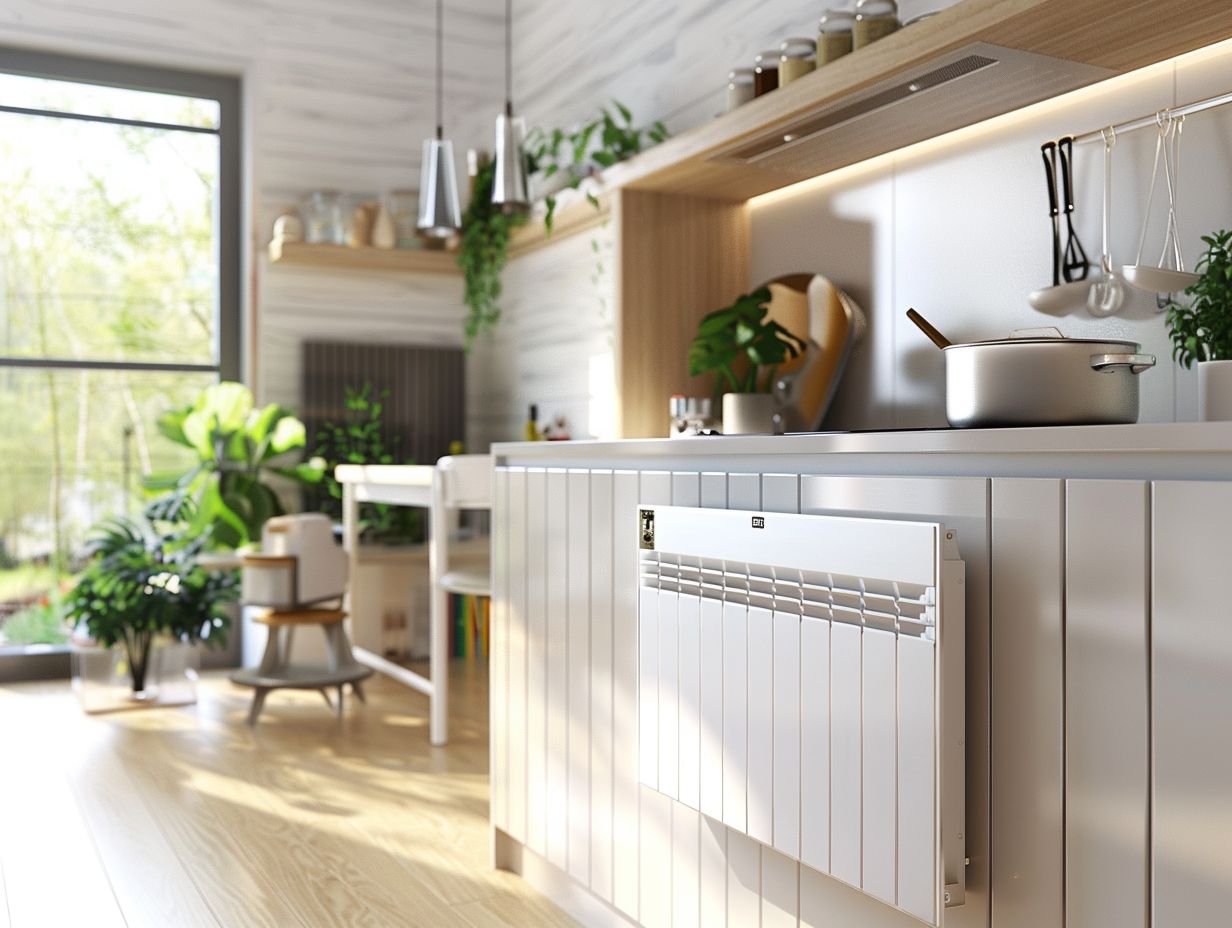
The necessary wattage for a kitchen radiator depends on the size of the room and the level of insulation. As a general rule, a small kitchen with good insulation will require around 200 watts of heating power per square meter, while a larger kitchen with poor insulation may need up to 250 watts per square meter.
What size radiator do I need for my kitchen?
The size of the radiator you need for your kitchen will primarily depend on the size of the room and the level of insulation. You should also consider the type of radiator you are installing, as different styles and materials may require different sizes for the same heating power. It is always best to consult with a professional for an accurate sizing recommendation.
How do I calculate the wattage for my kitchen radiator?
To calculate the wattage needed for your kitchen radiator, you can use a simple formula: multiply the square footage of your kitchen by the recommended wattage per square meter. For example, if your kitchen is 10 square meters and you need 200 watts per square meter, you will need a radiator with 2000 watts of heating power.
Can I use a higher wattage radiator in my kitchen?
It is not recommended to use a radiator with a higher wattage than needed for your kitchen. This can result in excessive heating, which can be uncomfortable and lead to higher energy bills. It is best to choose a radiator with the appropriate wattage for your specific kitchen size and insulation level.
What type of radiator is best for a kitchen?
The best type of radiator for a kitchen will depend on personal preference and the layout of the room. Column radiators are a popular choice as they provide efficient and even heat distribution. However, wall-mounted radiators or underfloor heating systems may also be suitable options for kitchens with limited wall space.
Do I need a separate radiator for my kitchen?
It is not necessary to have a separate radiator specifically for your kitchen. As long as the radiator you choose has the appropriate wattage for the size and insulation level of your kitchen, it can effectively heat the room along with the rest of your home. However, if you have a large kitchen with poor insulation, you may need to consider a separate radiator to ensure adequate heating.

